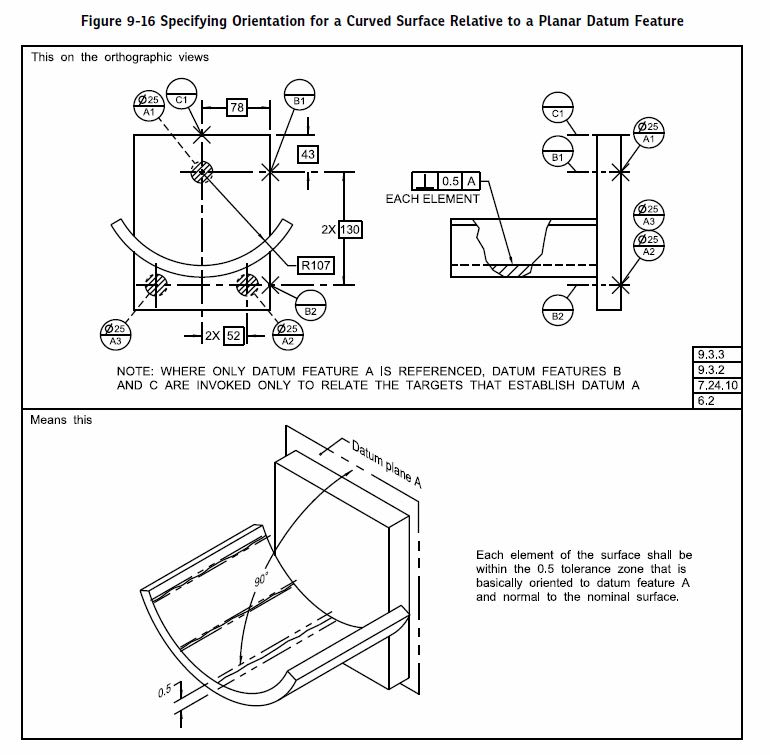

It is usually used on parts with complex outer shape and a constant cross-section like extrusions. Profile is a three-dimensional tolerance that applies in all directions regardless of the drawing view where the tolerance is specified. It might be used to specify the 2-dimensional tolerance for a line that is the cross section of a surface, for example. In GD&T the Profile of a Line symbol is used to establish a tolerane zone around a line in a feature. What is the profile of a line in gdt?ĭefinition of Profile of a Line. Profile is a three-dimensional tolerance that applies in all directions regardless. Profile is a complex tolerance that simultaneously controls a feature ‘s form, size, orientation, and sometimes location. In GD&T, profile tolerance defines a uniform boundary around a surface within which the elements of the surface must lie. These opinions help you to identify pitfalls you can encounter in attempting to comply with relevant electronic commerce laws.Frequently Asked Questions What is profile tolerance in gdt?

The Law of Electronic Commercial Transactions provides authoritative opinions on whether the courts, the regulators, and the parties in transactions are making the correct judgments in how they proceed. The authors’ analysis helps you understand the many conflicts and inconsistencies among local, national, and international laws affecting electronic commercial transactions. The Law of Electronic Commercial Transactions can help you stay on top! This authoritative treatise lays out the legal liability issues connected with a transaction and provides a complete analysis of the legal treatment for each issue, with thorough research and commentary. Rapid changes in the law, from legislators, regulators, and the courts, can have an impact on the way your clients do business. The exponential growth in electronic usage of commercial transactions has led to new challenges for financial institutions. A tremendous resource for in-house council, banking law attorneys, commercial law attorneys, corporations with an online presence, and financial institutions. Towle provide authoritative analyses of all the different issues facing those transacting e-commerce, including rights, licenses, liabilities, and compliance. The Law of Electronic Commercial TransactionsĮxpert authors Raymond T. Additionally, the subject matter has been restructured for better readability, with profile, orientation, and form now in separate sections, and material within sections reorganized.ĪSME Y14.5-2009 is a replacement of ASME Y14.5M-1994. Important changes address: concept of feature of size datum references and degrees of freedom composite position tolerances surface boundaries and axis methods of interpretation profile tolerances and symbology and modifiers tools. Now, a consensus committee of experts has revised Y14.5 for 21st-century applications. By providing uniformity in drawing specifications and interpretation, GD&T reduces guesswork throughout the manufacturing process - improving quality, lowering costs, and shortening deliveries. GD&T is an essential tool for communicating design intent - that parts from technical drawings have the desired form, fit, function and interchangeability. The Y14.5 standard is considered the authoritative guideline for the design language of geometric dimensioning and tolerancing (GD&T.) It establishes uniform practices for stating and interpreting GD&T and related requirements for use on engineering drawings and in related documents. Rider-French Consulting Limited – more info…
#Line profile per asme y14.5 1994 full
The third edition is in full colour throughout, as demanded by the modern log set and modern presentations. There is also a much expanded chapter on the modern image logs, both wireline and LWD.

Included for the first time are Logging While Drilling (LWD) tools for all the conventional measurements, Modular Formation Testers and Nuclear Magnetic Resonance (NMR) tools. The 3rd edition contains much new material which reflects the changes that have occurred since the second edition was published. All the chapters are illustrated by real log examples. Following the chapters on individual tools, the information that all the logs provide is drawn together in chapters on lithology, facies, sequence analysis and sequence stratigraphy, in which geological applications are the main subject. Petrophysics, that is, the use of logs for quantifying hydrocarbons is also considered, but only briefly.

As in the previous editions, the new, 3rd edition describes each of the common well logging tools in terms of physical principles, basic tool design, log characteristics, quantitative and then qualitative, mainly geological uses.


 0 kommentar(er)
0 kommentar(er)
